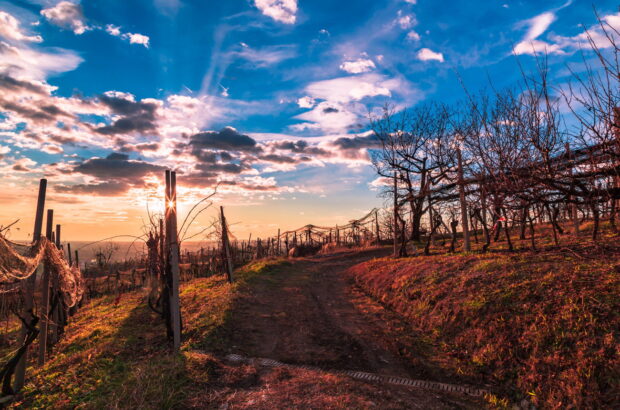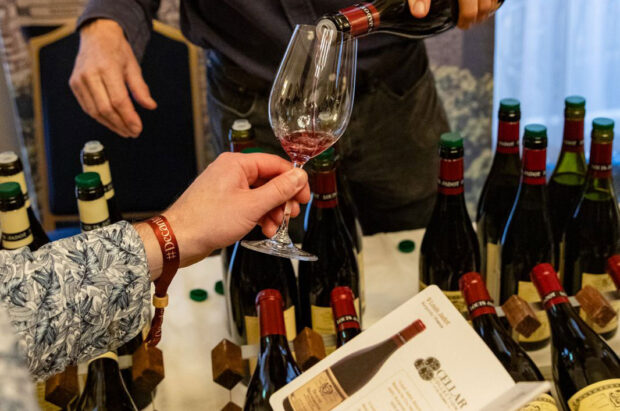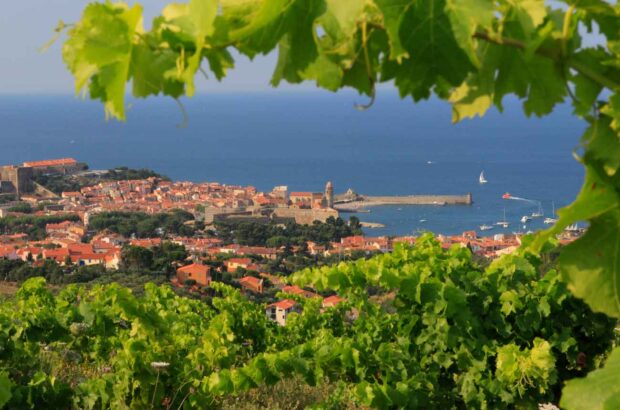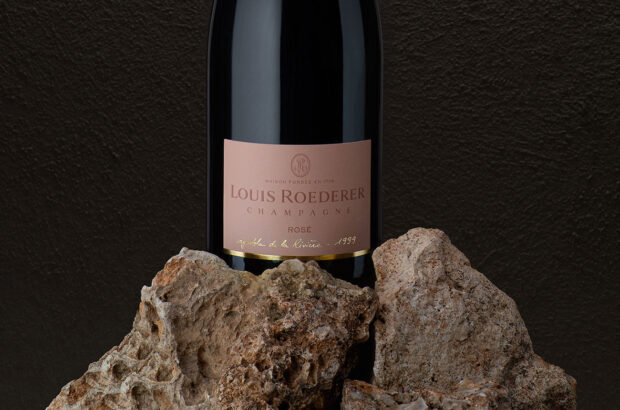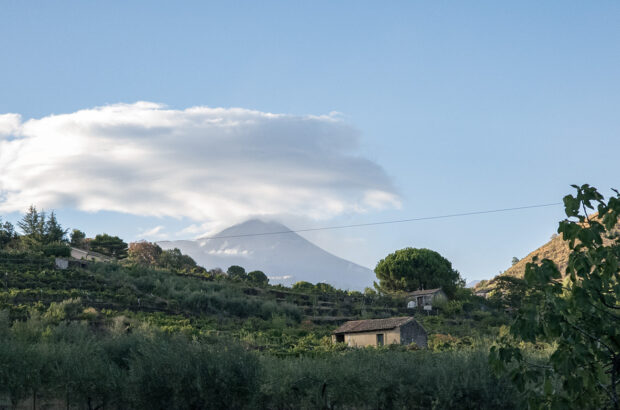What is a field blend? How is it different from a blended wine?
Imagine a meadow of wildflowers picked all at once and made into perfume. Field blends are wines made from different grape varieties that are grown together in one vineyard and then co-fermented. Traditional wine blends, on the other hand, use grapes from different plots, fermented separately by variety and blended later.
The idea of mixed-grape vineyards can be traced to Roman agricultural practices, as documented by writer-farmer Columella in the 1st century CE. It didn’t happen overnight and certainly not for romantic reasons, but rather for yield.
Grapevines were likely sparse and scattered back in the day. Farmers harvested existing wild and native grapes together, and if a grape didn’t perform, it would be replaced with something that might work better.
They would propagate, trade, select and cultivate for desirable traits, such as productivity and resistance to pests and diseases. So, it makes sense that field blends are typically found in the Old World and are associated with older vines, because they pre-date modern varietal planting.
Four examples of field blends listed below
{"content":"PC9wPgo8cD48ZGl2IGNsYXNzPSJhZC1jb250YWluZXIgYWQtY29udGFpbmVyLS1tb2JpbGUiPjxkaXYgaWQ9InBvc3QtaW5saW5lLTIiIGNsYXNzPSJpcGMtYWR2ZXJ0Ij48L2Rpdj48L2Rpdj48L3A+CjxoND48c3Ryb25nPlNvIG5vbmUgaW4gdGhlIE5ldyBXb3JsZD88L3N0cm9uZz48L2g0Pgo8cD5Ob3QgcXVpdGUuIFRoZXJlIGFyZSBjZW50ZW5hcmlhbiB2aW5lcyBwcm9kdWNpbmcgZmllbGQgYmxlbmRzIG91dHNpZGUgb2YgRXVyb3BlLiBLbm93biBmb3IgaXRzIHByZS1pbmR1c3RyaWFsIGFncmljdWx0dXJhbCBhcHByb2FjaCwgQ2FsaWZvcm5pYeKAmXMgUmlkZ2UgVmluZXlhcmRzIHByb2R1Y2VzIGVzdGF0ZS1ncm93biBmaWVsZCBibGVuZHMgc3RhcnJpbmcgWmluZmFuZGVsLjwvcD4KPHA+QWxzbywgaXRzIFBhZ2FuaSBSYW5jaCB3aW5lIGlzIGEgZmllbGQgYmxlbmQgZnJvbSB2aW5lcyBwbGFudGVkIGZyb20gdGhlIGxhdGUgMTgwMHMuIEluIG5laWdoYm91cmluZyBMYWtlIENvdW50eSwgRGFuY2luZyBDcm93IFZpbmV5YXJkcyBtYWtlcyBhIHdpbmUgZnJvbSBjby1wbGFudGVkIHZpbmVzIGluIHRoZSBncm91bmQgc2luY2UgMTkwMS48L3A+CjxwPlRoZXNlIGFyZSBhbW9uZyB0aGUgZmV3IHN1cnZpdmluZyBmaWVsZCBibGVuZCB2aW5leWFyZHMgYWdlZCAxMDAgeWVhcnMgb3IgbW9yZSBpbiBDYWxpZm9ybmlhLCBhcyByZWNvZ25pc2VkIGJ5IHRoZSBIaXN0b3JpY2FsIFZpbmV5YXJkIFNvY2lldHkuPC9wPgo8ZGl2IGNsYXNzPSJhZC1jb250YWluZXIgYWQtY29udGFpbmVyLS1tb2JpbGUiPjxkaXYgaWQ9InBvc3QtaW5saW5lLTMiIGNsYXNzPSJpcGMtYWR2ZXJ0Ij48L2Rpdj48L2Rpdj4KPHA+QmV5b25kIENhbGlmb3JuaWEgdGhlcmUgYXJlIGhhbmRmdWxzIG9mIG90aGVyIHByb2R1Y2VycyB3aG8gYXJlIGludGVudGlvbmFsbHkgcGxhbnRpbmcgdmluZXlhcmRzIHRvIHByb2R1Y2UgZmllbGQgYmxlbmRzLCBzdWNoIGFzIFNvdXRoIEFmcmljYeKAmXMgQWxoZWl0IFZpbmV5YXJkcy48L3A+CjxoND48c3Ryb25nPldoaWNoIGFyZWFzIG9mIHRoZSB3b3JsZCBhcmUga25vd24gZm9yIGZpZWxkIGJsZW5kcz88L3N0cm9uZz48L2g0Pgo8cD5BdXN0cmlh4oCZcyBoaXN0b3J5IHdpdGggZmllbGQgYmxlbmRzIGlzIG5vdyBzZWVpbmcgYSByZXZpdmFsLiBHZW1pc2NodGVyIFNhdHogaXMgYSB3aW5lIHRoYXQgc2hvd2Nhc2VzIGNvLWZlcm1lbnRlZCBncmFwZXMgY3VsdGl2YXRlZCBpbiBhbmQgYXJvdW5kIFZpZW5uYS4gUHJvZHVjZXIgRnJpdHogV2llbmluZ2VyIGRlc2NyaWJlcyB0aGUgcGVyZmVjdCBHZW1pc2NodGVyIFNhdHogYXMgYSB3aW5lIGluIHdoaWNoIGluZGl2aWR1YWwgdmFyaWV0aWVzIGFyZSBpbmRpc2Nlcm5pYmxlLjwvcD4KPGRpdiBjbGFzcz0iYWQtY29udGFpbmVyIGFkLWNvbnRhaW5lci0tbW9iaWxlIj48ZGl2IGlkPSJwb3N0LWlubGluZS00IiBjbGFzcz0iaXBjLWFkdmVydCI+PC9kaXY+PC9kaXY+CjxwPuKAmE9uZSB2YXJpZXR5IGlzIGxpa2UgYW4gaW5zdHJ1bWVudCBhbmQgdGhlIEdlbWlzY2h0ZXIgU2F0eiBpcyB0aGUgd2hvbGUgb3JjaGVzdHJhLOKAmSBoZSBleHBsYWlucy48L3A+CjxwPkluIFBvcnR1Z2Fs4oCZcyBEb3VybyB2YWxsZXksIGNvLXBsYW50aW5nIGhhcyBiZWVuIGEgdHJhZGl0aW9uIGZvciBjZW50dXJpZXMsIGluaXRpYWxseSBmb3IgUG9ydCBwcm9kdWN0aW9uIGFuZCBtb3JlIHJlY2VudGx5IGFsc28gZm9yIGRyeSB3aW5lcy4gUXVpbnRhIGRvIENyYXN0b+KAmXMgTWFyaWEgVGVyZXNhIGNvbWVzIGZyb20gYSBwbG90IG9mIDU0IGdyYXBlIHZhcmlldGllcyBmcm9tIGhlcml0YWdlIHZpbmVzLCBhY2NvcmRpbmcgdG8gTWlndWVsIFJvcXVldHRlLCB3aG8gc2F5cyDigJh0aGUgcmVjaXBlIGlzIGluIHRoZSBmaWVsZOKAmS48L3A+CjxkaXYgY2xhc3M9ImFkLWNvbnRhaW5lciBhZC1jb250YWluZXItLW1vYmlsZSI+PGRpdiBpZD0icG9zdC1pbmxpbmUtNSIgY2xhc3M9ImlwYy1hZHZlcnQiPjwvZGl2PjwvZGl2Pgo8cD5FeGNlcHRpb25hbGx5IHZhcmllZCBtaWNyb2NsaW1hdGVzIGRpY3RhdGUgcHJlY2lzZSBoYXJ2ZXN0IHRpbWVzIG9mIHNwZWNpZmljIHNlY3Rpb25zIHdpdGhpbiB0aGUgdmluZXlhcmQgdG8gYmVzdCBpbGx1bWluYXRlIHRoZSB0ZXJyb2lyLCBhbmQgbWFpbnRhaW4gdGhlIGludGVncml0eSBhbmQgY29tcGxleGl0eSBvZiB0aGUgd2luZS48L3A+CjxoND48c3Ryb25nPkFueSBvdGhlciBuYW1lcyB0byBsb29rIG91dCBmb3I\/IDwvc3Ryb25nPjwvaDQ+CjxwPkFsc28gaW4gUG9ydHVnYWwsIEFudG9uaW8gTWFkZWlyYSBzZWVrcyB0aGUgZXRoZXJlYWwgc2lkZSBvZiB0aGUgRMOjbyBhbmQgc2hhcmVzIGhpcyBsb3ZlIG9mIHJlc2N1aW5nIG9sZCBmb3Jnb3R0ZW4gdmluZXMgdG8gbWFrZSBhIDxlbT5wYWxoZXRlPC9lbT4sIGluIHdoaWNoIGJsYWNrIGFuZCB3aGl0ZSBncmFwZXMgYXJlIOKAmG1peGVkIGpveWZ1bGx54oCZIHRvIGNyZWF0ZSBlYXN5LWRyaW5raW5nIOKAmGZhcm1lcuKAmXMgc3R5bGXigJkgd2luZXMuPC9wPgo8cD5UaGUgbG9uZy1hZ2Vpbmcg4oCYPGVtPmNvbXBsYW50YXRpb248L2VtPuKAmSB3aW5lcyBvZiBEb21haW5lIE1hcmNlbCBEZWlzcyBpbiBBbHNhY2UgYXJlIGJvdGggdHJhZGl0aW9uYWwgYW5kIHZpc2lvbmFyeSwgaGlnaGxpZ2h0aW5nIHNvaWwgc3BlY2lmaWNpdHkgdGhyb3VnaCAxMyBBbHNhY2UgdmFyaWV0aWVzLiBXaXRoIGdyZWF0IHJlc3BlY3QgZm9yIHRyYWRpdGlvbiwgU2NhcmJvbG8gaW4gRnJpdWxpLCBub3J0aGVhc3QgSXRhbHksIGFwcHJlY2lhdGVzIGZpZWxkIGJsZW5kcyBmb3IgdGhlaXIg4oCYZmFzY2luYXRpbmfigJkgY29tcGxleGl0eS48L3A+CjxwPlNlY29uZC1nZW5lcmF0aW9uIE1hdHRpYSBTY2FyYm9sbyBzYXlzIGl04oCZcyBhYm91dCB0aGUg4oCYY29vcGVyYXRpb24gb2YgY3VsdGl2YXJzLCB3aXRoIGVhY2ggeWVhciBiZWluZyBhIGRpZmZlcmVudCBsb3ZlIHN0b3J54oCZLjwvcD4KPGRpdiBpZD0iYXR0YWNobWVudF81Mzc5MzEiIHN0eWxlPSJ3aWR0aDogMTMxMHB4IiBjbGFzcz0id3AtY2FwdGlvbiBhbGlnbmNlbnRlciI+PGltZyBmZXRjaHByaW9yaXR5PSJoaWdoIiBkZWNvZGluZz0iYXN5bmMiIGFyaWEtZGVzY3JpYmVkYnk9ImNhcHRpb24tYXR0YWNobWVudC01Mzc5MzEiIGNsYXNzPSJsYXp5bG9hZCBibHVyLXVwIHdwLWltYWdlLTUzNzkzMSBzaXplLWZ1bGwiIGRhdGEtcHJvY2Vzc2VkIHNyYz0iaHR0cHM6Ly93d3cuZGVjYW50ZXIuY29tL3dwLWNvbnRlbnQvdGhlbWVzL3NpbWJhLXRoZW1lL2Fzc2V0cy9pbWFnZXMvcGxhY2Vob2xkZXIucG5nIiBkYXRhLXNyYz0iaHR0cHM6Ly9rZXlhc3NldHMudGltZWluY3VrLm5ldC9pbnNwaXJld3AvbGl2ZS93cC1jb250ZW50L3VwbG9hZHMvc2l0ZXMvMzQvMjAyNC8wOS93aWVuaW5nZXJfZ3JhcGVzLmdpZiIgYWx0PSJ3aWVuaW5nZXJfZ3JhcGVzIiB3aWR0aD0iMTMwMCIgaGVpZ2h0PSI4NjAiPjxwIGlkPSJjYXB0aW9uLWF0dGFjaG1lbnQtNTM3OTMxIiBjbGFzcz0id3AtY2FwdGlvbi10ZXh0Ij5NaXhlZCB2YXJpZXRpZXMgZGVzdGluZWQgZm9yIEZyYW56IFdpZW5pbmdlcuKAmXMgR2VtaXNjaHRlciBTYXR6PC9wPjwvZGl2Pgo8aDQ+PHN0cm9uZz5JdOKAmXMgc2FpZCB0aGF0IHdpbmVzIG9mIHF1YWxpdHkgY29tZSBmcm9tIGZydWl0IHBpY2tlZCBhdCBvcHRpbWFsIHJpcGVuZXNzLiBBcyBmaWVsZCBibGVuZCBncmFwZSB2YXJpZXRpZXMgaGF2ZSBkaWZmZXJlbnQgcmlwZW5pbmcgdGltZXMsIGRvZXMgdGhpcyBzdGlsbCBhcHBseT88L3N0cm9uZz48L2g0Pgo8cD5Hb29kIHF1ZXN0aW9uISBPZiBjb3Vyc2UsIHRoZSBkcmVhbSB2aW5leWFyZCBjb25zaXN0cyBvZiB2aW5lcyB3aXRoIHNpbWlsYXIgcmlwZW5pbmcgdGltZXMsIGJ1dCBpdOKAmXMgbm90IGFsd2F5cyB0aGUgY2FzZSDigJMgZXZlbiBpbiBhIG1vbm92YXJpZXRhbCB2aW5leWFyZC4gRmFjdG9yaW5nIGluIHN1Y2ggdmFyaWFibGVzIGFzIHNvaWwgYW5kIG1pY3JvY2xpbWF0ZSwgb3B0aW1hbCByaXBlbmVzcyBpcyBub3QgYWNoaWV2ZWQgYWNyb3NzIGFsbCBncmFwZSB2YXJpZXRpZXMuPC9wPgo8cD5Qcm9wb25lbnRzIG9mIGZpZWxkIGJsZW5kcyBzdHJpdmUgdG8gZmluZCB0aGF0IHN3ZWV0IHNwb3QsIGluIHdoaWNoIHVuZGVycmlwZSBiZXJyaWVzIGNvbnRyaWJ1dGUgbmVydmUgYW5kIGFjaWRpdHksIGFuZCBvdmVycmlwZSBvbmVzIGFkZCBjb21wbGV4aXR5IGFuZCBib2R5LiBZZXQsIHdoaWxlIHRoZXJlIGFyZSBtYW55IGhpZ2gtcXVhbGl0eSBmaWVsZCBibGVuZHMgYmVpbmcgbWFkZSwgdGhpcyBpcyBvbmUgYXNwZWN0IG9mIHRoZW0gdGhhdCBkZXNlcnZlcyBmdXJ0aGVyIGV4cGxvcmF0aW9uLjwvcD4KPGg0PjxzdHJvbmc+RG8gZmllbGQgYmxlbmQgd2luZXMgaGVscCBlbnZpcm9ubWVudGFsIHJlc2lsaWVuY2U\/PC9zdHJvbmc+PC9oND4KPHA+WWVzLiBIaXN0b3JpY2FsbHksIGZpZWxkIGJsZW5kIHZpbmV5YXJkcyBjYW1lIGFib3V0IGluIHBhcnQgYmVjYXVzZSBmYXJtZXJzIHdlcmUgaGVkZ2luZyB0aGVpciBiZXRzIGFnYWluc3QgZGlzZWFzZSBhbmQgYWR2ZXJzZSB2aW50YWdlIGNvbmRpdGlvbnMuIFRoaXMgaXMgc3RpbGwgYW4gaW1wb3J0YW50IGNvbnNpZGVyYXRpb24gZm9yIHByb2R1Y2VycyBvZiBmaWVsZCBibGVuZHMgdG9kYXkuPC9wPgo8ZGl2IGNsYXNzPSJpbmplY3Rpb24iPjwvZGl2Pgo8cD5EYXZpZCBHYXRlcyBvZiBSaWRnZSBWaW5leWFyZHMgbm90ZXMgdGhhdCBkaXZlcnNpdHkgaW4gdGhlIHZpbmV5YXJkIGZvc3RlcnMgcmVzaWxpZW5jZSBiZWNhdXNlIGRpZmZlcmVudCB2YXJpZXRpZXMgY29udHJpYnV0ZSBkaWZmZXJlbnQgc3RyZW5ndGhzLjwvcD4KPGg0PjxzdHJvbmc+U28gd2Ugc2hvdWxkIHNlZWsgb3V0IGZpZWxkIGJsZW5kcz88L3N0cm9uZz48L2g0Pgo8cD5UaGVzZSB3aW5lcyB0ZWxsIHRoZSBzdG9yeSBvZiBhIHVuaXF1ZSB2aW5leWFyZCwgdGhyb3VnaCBhIGthbGVpZG9zY29wZSBvZiBkaWZmZXJlbnQgZ3JhcGVzLiBUaGlzIGRpdmVyc2l0eSBjYW4gb2ZmZXIgYSB3aW5lIG9mIHVuZXhwZWN0ZWQgdGhyaWxsIGFuZCBjb21wbGV4aXR5LCBiYWxhbmNlIGFuZCByZWdpb25hbCBjaGFyYWN0ZXIuPC9wPgo8cD5JdOKAmXMgYSBncmVhdCBvbmUgdG8gYWRkIHRvIHlvdXIgd2luZSBkaXNjb3ZlcnkgbGlzdC48L3A+CjxwPgo="}
Marisa Finetti selects four field blends worth seeking out
{}
{"wineId":"86977","displayCase":"standard","paywall":true}
{"wineId":"86978","displayCase":"standard","paywall":true}
{"wineId":"84702","displayCase":"standard","paywall":true}
{"wineId":"86979","displayCase":"standard","paywall":true}
{}
Related articles



